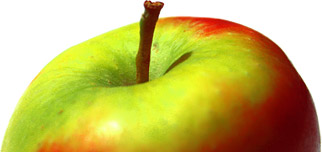Josephine de Malines Pear tree
Owner: Cheuk
Location: Amsterdam, NOORD-HOLLAND, Netherlands
- Find out about this Pear variety
- Find other owners of Josephine de Malines Pear trees
- I am the owner of this tree
| Age: | Planted in about 2010 |
| Age of this tree: | 17 years |
| Rootstock: | A medium fast rootstock |
| Soil: | Plot has peaty/acidity soil, soil is really really poor soil. I have to feed the trees a lot |
| Climate at this location: | zone 7a, mild sea climate, lots of sun, lots of wind, hedge to slowdown some wind |
| Pruning: | Pruning is the only way to keep the espalier an espalier. |
| Tree form: | Espalier |
| Height: | Up to 6ft / 2m |
| Cropping: | Light crops |
| Growth: | This tree grows fairly well here |
| Herbicides: | Manual treatment (hoeing and weeding) |
| Pesticides: | Organic treatments |
| Local pests: | wasps, birds, mice, sometimes fungal disease, plum moth or some other moth problem. |
Owner's comments
Josephine de malines, has less fungal disease problems than winter nelis, my other pear tree. It is seldom biannular; stone forming around the seed core if it doesn't rain enough, Josephine is less attacked by insects than my winter nelis trees. Taste: less creamy than the winter nelis pear, but creamy enough, sweet, has a nice perfume, and they say its fruit flesh hold a taste of rose water. I have never tasted that in these pears, but they are nevertheless wonderfully tasty. I don't want to go to the Dutch supermaket chainstores and buy these conferance pears. I think these tasteless pears are the red delicious of the pear world. I'd rather grow something they (the chainstores) don't sell, and is really tasty. Please mind that the Josephine de Malines is a tip bearer.Season records for this tree
2022
Spring blossom: 20 April
Canker: Not present
Scab: Not present
Mildew: Not present
Fireblight: Not present
Cedar-apple rust: Not present
Woolly aphid: Not present
Codling moth: Mild attack
Plum fruit moth: Mild attack
Silverleaf: Not present
Josephine de Malines has nice white flowers. It is a very healthy pear variety. I would recommend this to pear lovers who have never grown a pear tree, and want to have something special. I scan or browse my pear trees for abnormalities every time after they have blossomed. I pick off the small, but swelling fruit which display a strange form or strange colour. Chances are that these pickings are full with larvae.

